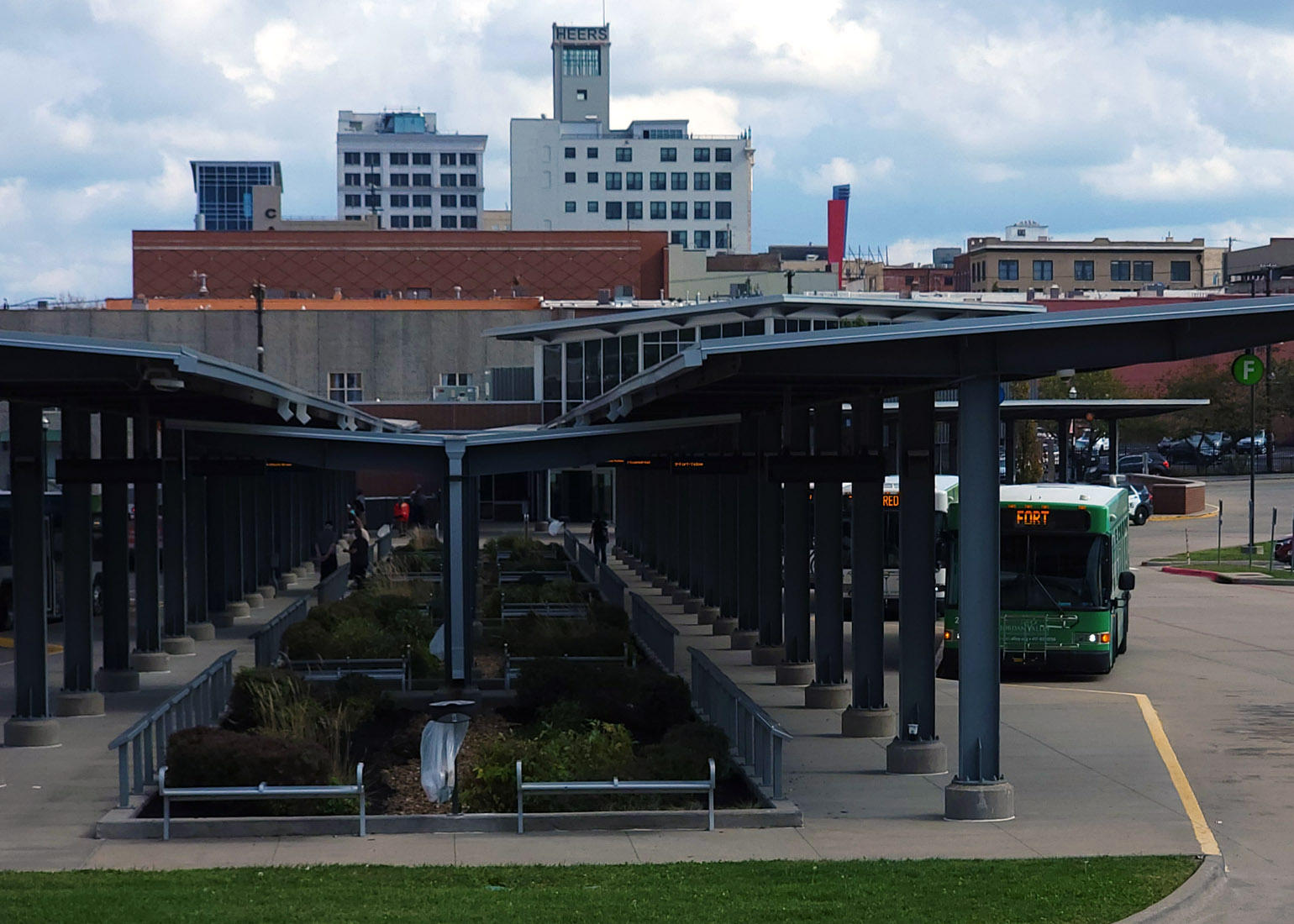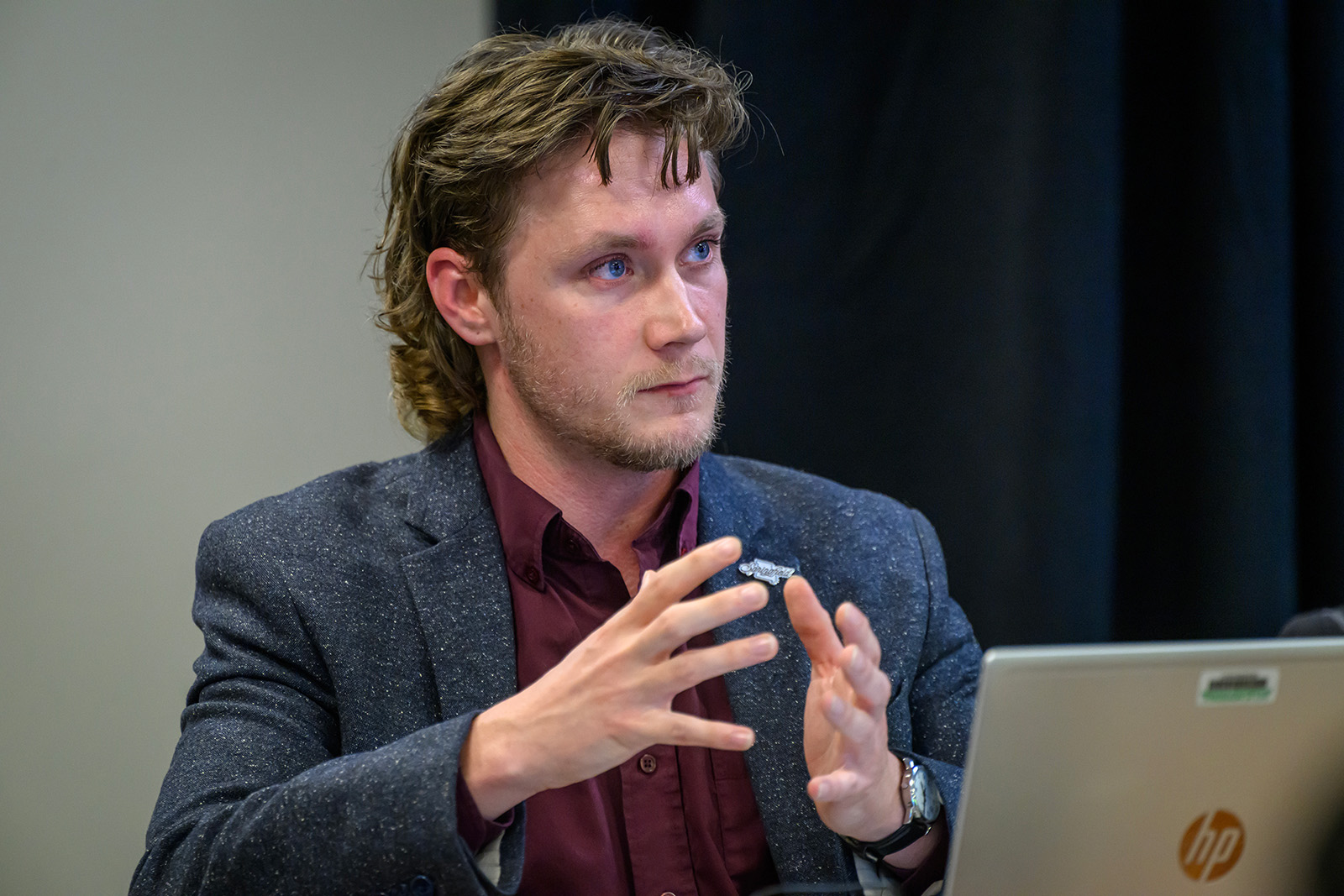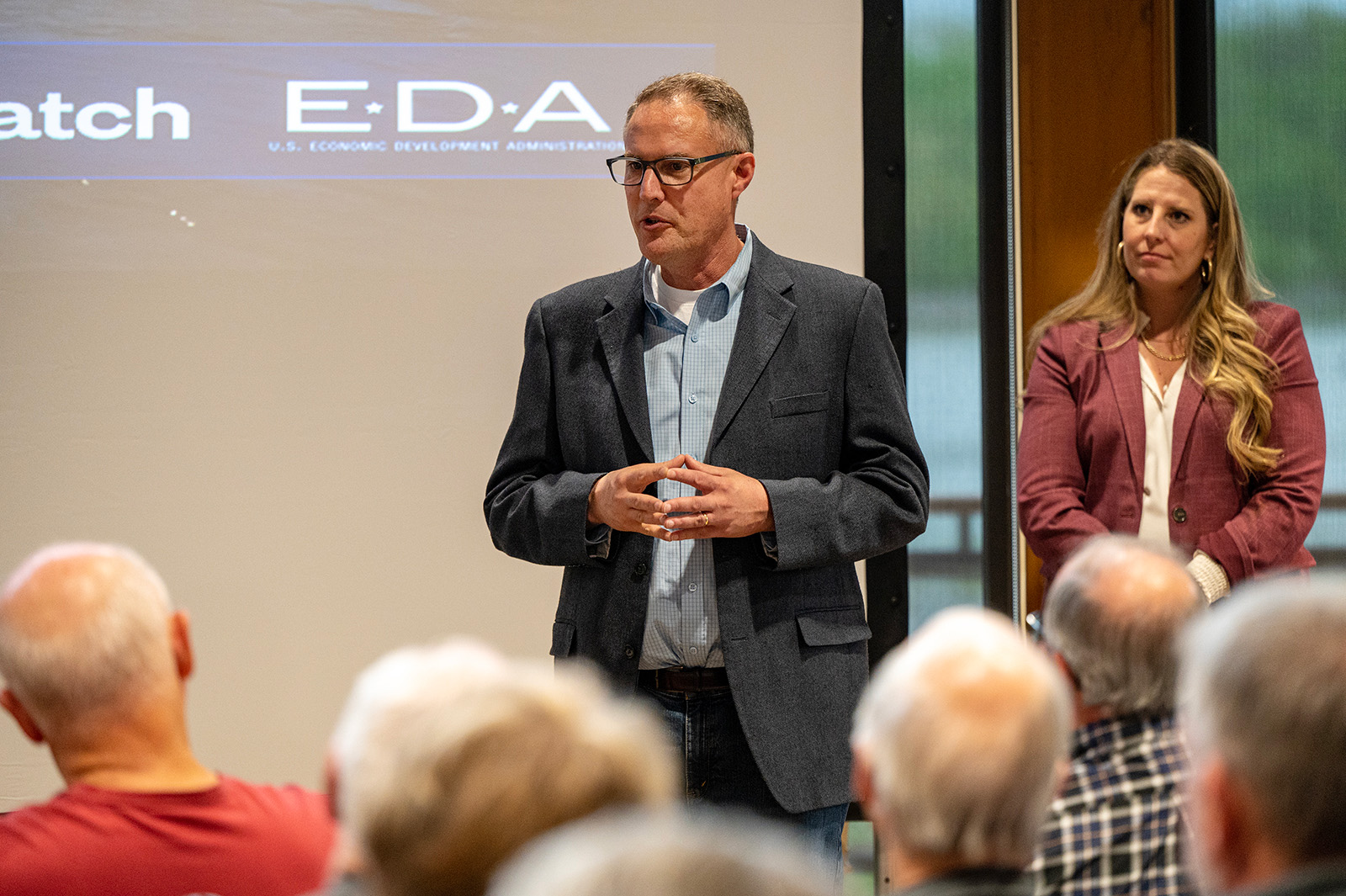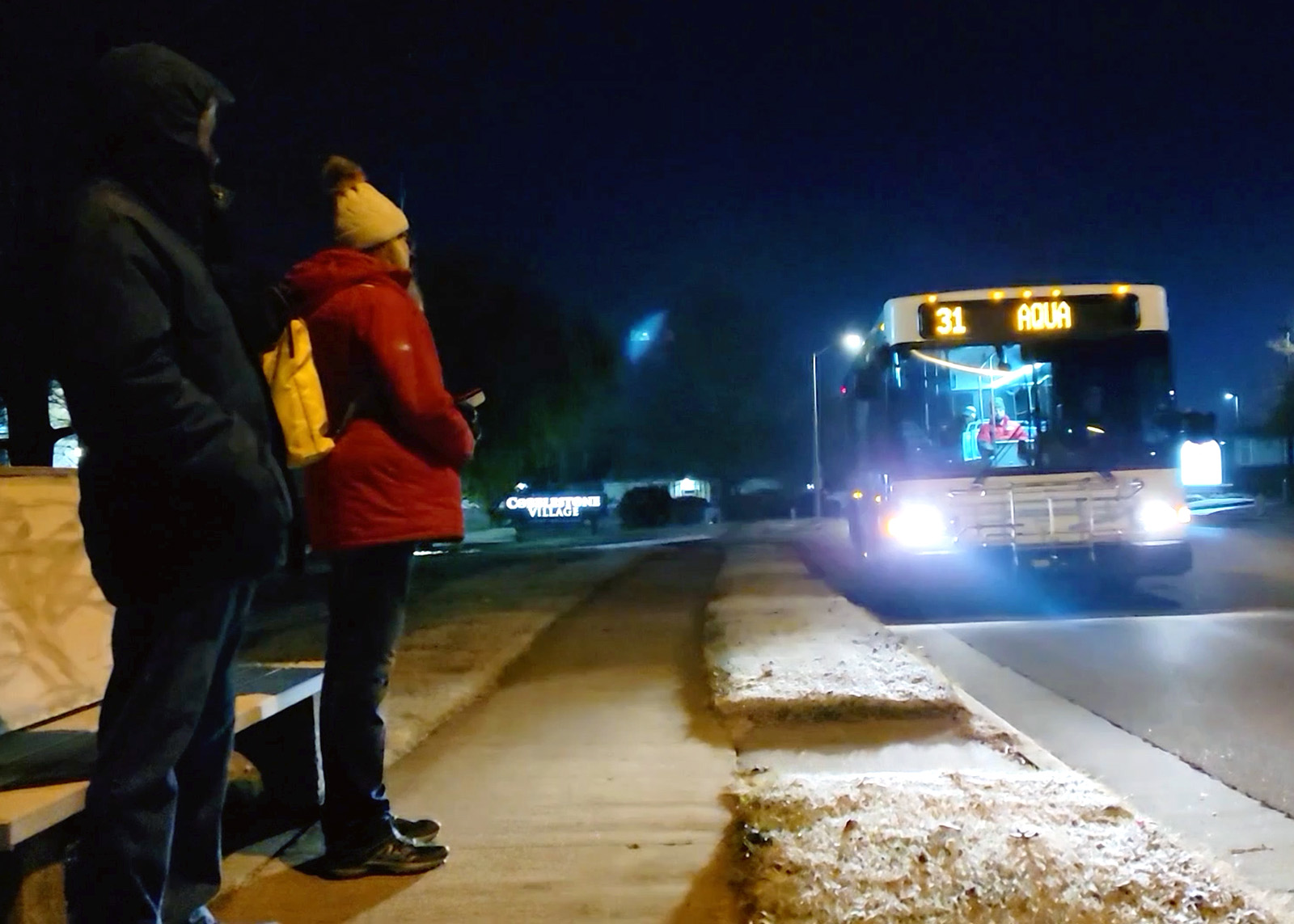Changes are coming to the Springfield bus system as City Utilities considers the future of public transportation in Springfield and, potentially, its surrounding communities.
ConnectSGF, a transit optimization study recently completed by the engineering and design firm Olsson, recommends a host of short-term changes and long-term ideas to ensure “The Bus” — the brand name of CU’s transit services — continues to meet the needs of its riders, while expanding the bus system's footprint and frequency in the Springfield area.
While not a formal roadmap for the bus system's future, the 124-page study will serve as a tool to guide future decisions by the Springfield Board of Public Utilities and, in some circumstances, the Springfield City Council.
One of those circumstances could arise soon, as CU considers a recommendation to reduce bus fares by 20%. The move would reduce the base fare from $1.25 to $1. The public utility is also considering trimming Sunday service after 5 p.m. in order to add frequency on weekdays, and expand Saturday and evening bus coverage.
The study’s findings and recommendations will be presented to the whole of the City Council in February.
Recommendations for the near term, long haul

Work on ConnectSGF began in August 2022, and wrapped up in December 2023. During that time period, the consultant team and CU staff conducted an in-depth analysis of the transit system and collected public input to determine how to improve — and expand on The Bus.
Recommendations were divided into short-term, medium-term and long-term plans, with ideas and costs growing in each phase. The proposed fare reduction and changes to coverage and frequency were recommended for the near future, and could be implemented in about a year, according to Kelly Turner, vice president of customer operations and communications at City Utilities.
Short-term suggestions also include ending service one hour earlier in the evening and restructuring certain routes. While CU recommends an overall increase in bus services, the first phase of the study was designed around budget realities of the immediate future. These changes could cost CU up to $250,000 annually, increasing annual operating expenses to about $10.6 million. Short-term capital costs, which include bus replacements, could ring in north of $7.2 million.
The medium-term plans extend 5-10 years into the future, and include upgrades to meet a 45-60% increase in ridership. In addition to increasing bus frequency in high-ridership areas, extending weekday routes into the weekend and reducing overall travel times, the study suggests adding regional service to Springfield's surrounding communities. Micro transit, the concept of offering on-demand rides in certain parts of Springfield, is also on the table.
These recommendations begin to illustrate the sheer cost of expansive improvements to the bus system, bringing the annual operating costs to nearly $19 million and requiring capital investments of about $16 million.
Long-term plans illustrate the “ultimate vision for transit in Springfield” and build on the ideas introduced for the medium-term. Recommendations include expanding public transportation coverage in and around Springfield, 15-minute frequency — an industry standard in some markets — for some routes and the additions of new hub facilities similar to the CU Transit Center downtown.
The long-term idea bucket could cost as much as $44 million a year, and require more than $55 million in one-time expenses.
related in-depth story
Blue Line, Orange Line and lifeline: Springfield bus service functions for those of meager means
The 11-person Springfield Board of Public Utilities — which is separate from the City Council, but appointed by the City Council — is re-examining its bus service, which CU has provided since 1945.
Prioritizing frequent flyers, eyeing future riders

While the “lofty” goals of the medium and long-term plans aim to significantly upgrade Springfield's public transportation system, the study first and foremost aims to meet the needs of customers who rely on the transit system.
“We know that a lot of our customers, they make a lot of life decisions based on our route configurations and our service and so they may choose where they live or work or otherwise based on that and so we really try to not to [make changes] haphazardly or with too much frequency,” Turner said.
The study also aspires to increase ridership by providing convenience, trips comparable to the travel time of a single car and coordination with development, while focusing resources in high-density areas.
And while riders who rely on the bus will remain a priority through the the system's transformation, it's also a vision of the study to bring in new riders, a prospect Turner acknowledged would be challenging in a city where it's “easy” for people to drive their own vehicles.
Councilmember Brandon Jenson, a proponent of public transit and frequent rider of The Bus, said convincing more people to ride the bus would require a strong education campaign, and possibly an incentive.
“I believe that once people ride it for the first time, if they have a good experience, then they'll be much more likely to use it again,” said Jenson, who attended the Jan. 23 CU board meeting where ConnectSGF was first presented.
Public input, funding and fares

Many of the recommendations, especially the pricier ones, will require additional public input and further discussion on how they will be funded. Funding mechanisms for some of the study’s propositions could come in the form of partnerships with public and private sector organizations.
“Those next big steps of additional service and kind of a larger scale makeover of the transit system will require probably a lot more community conversation and figuring out exactly how the community would want to prioritize transit expansion alongside all the other competing priorities,” Turner said.

ConnectSGF also considers alternatives to the recommendations made — in terms of both transit services and routes as well as the bus fare concepts. The study explores the possibility of a partial or limited free fare, which could be implemented without going to a systemwide free fare.
Jenson suggested a “line by line” approach to offer free bus service to those who need it the most, while still collecting fares from those that can more easily afford it.
“If our goal is to have the best available transit system, to me, it doesn't make sense to completely eliminate a source of revenue that makes that possible, no matter how small it may be right now,” Jenson said.
CU collected just less than $800,000 in fare revenue in 2023, and maintains an operating budget of about $10.5 million for the city's transit system.
The public utility is unable to offer free fares due to restrictive bond covenants and interpretations of the Missouri Constitution, according to previous reporting by the Hauxeda.

“I never like to say you can't do something, because there's always a mechanism on how you can do it,” CU President Gary Gibson said at a meeting Jan. 23.
While there was consensus from the Board of Public Utilities on the short-term plans recommended by the study and independently by CU staff, board members noted that the implementation of the study’s many components would require a good deal of experimenting to determine what works on a practical level.
“That piece is going to be a really important part of it,” board member Scott Bratcher said. “I know that there are a lot of approvals, and a lot of oversight and a lot of restrictions that we might have all the way up to the state level because of the nature of our entity, but within that we might have an ability to test things, figure out some real answers before we go full implementation.”
Study results, and more information about ConnectSGF can be found on City Utilities' website.



